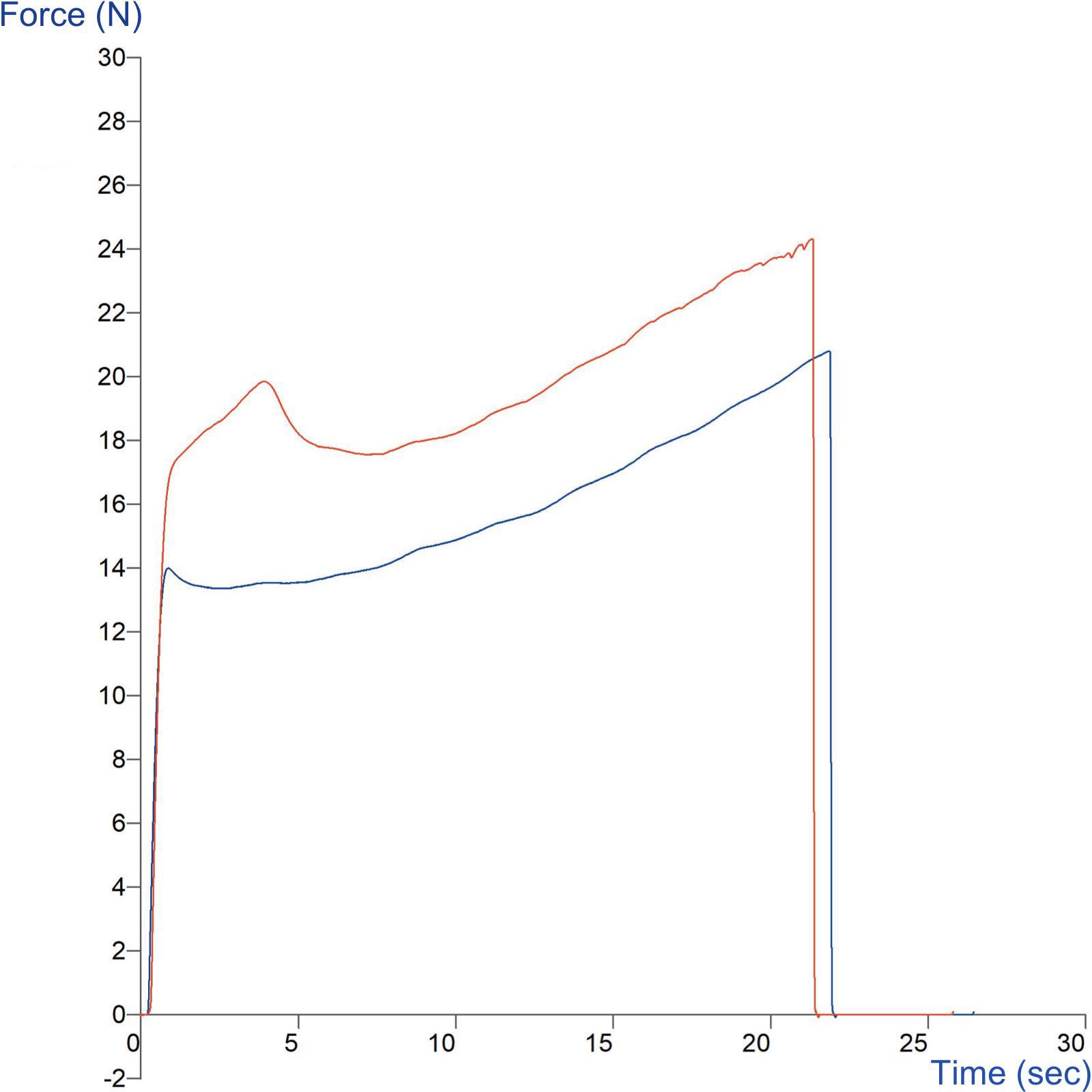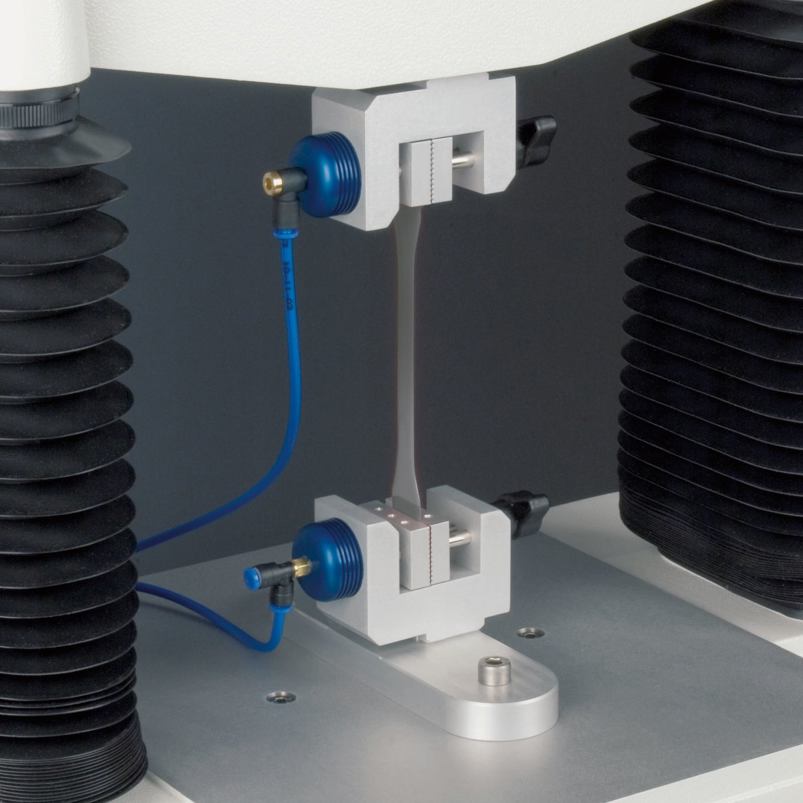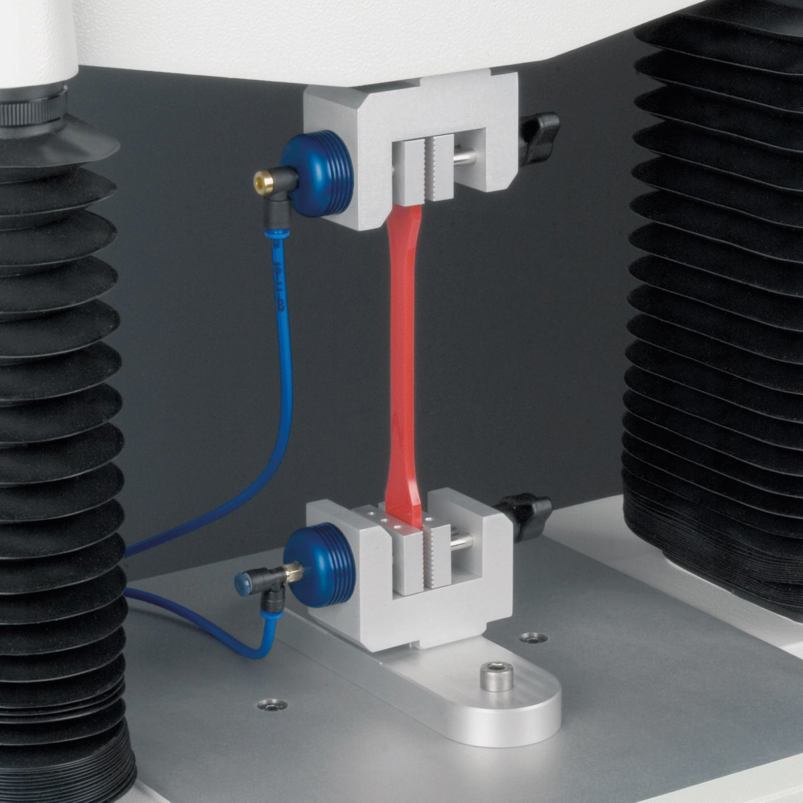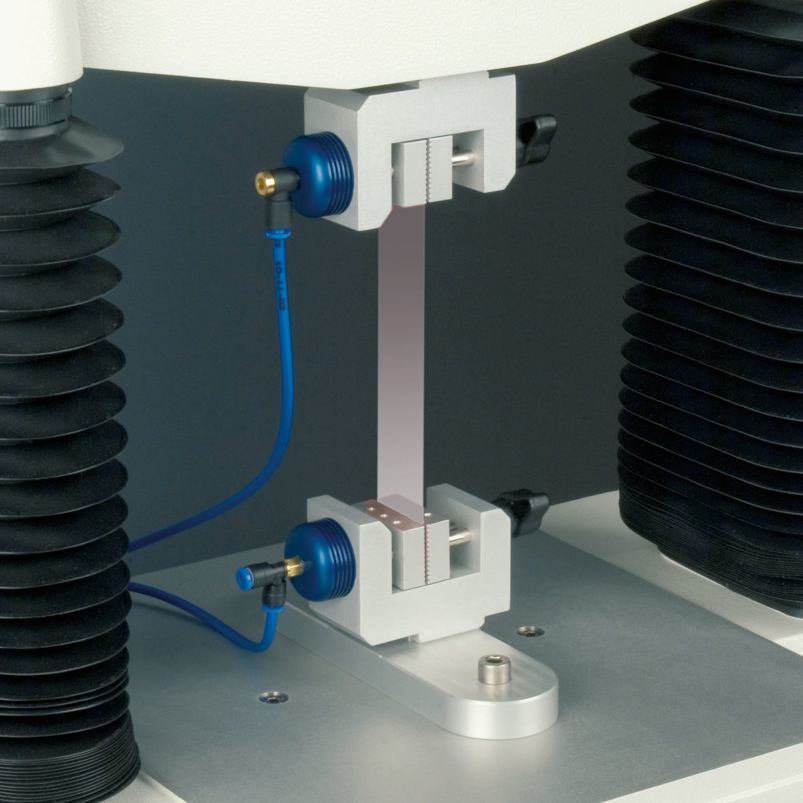Product overview
Pneumatic grips are often a preferred means of holding a sample for tensile testing because the gripping pressure can be controlled precisely and because deformation of the specimen does not produce any change in the gripping pressure. Pneumatic action grips are excellent at holding materials and products that 'flow' or 'creep, during a test as the gripping jaw face exhibits a fast follow through action that keeps the side pressure on the test sample constant through the test. Also, because of the fast opening/closing action that is foot-switch operated it is very quick to change sample. This minimises delay in repeat testing.
The grips are operated from an existing compressed air source that has an output regulator capable of maintaining the output pressure at a user set value up to 10Bar maximum pressure. The pressure used determines the constant side pressure applied by the jaw face. Adjustment of the air pressure enables the optimum holding force to be used for a specific sample, thereby minimising sample damage and grip breaks (i.e. the sample breaking where it exits the grip).
The footswitch can be adjusted to either close or open the pneumatic grips when pressed. It will normally be supplied to OPEN the grips when pressed but the user must check this before touching the grips.
The Pneumatic Grips are supplied with a length of blue coloured pneumatic tube approx. 4 metres long. This is to be cut to length to connect the components together as shown in the diagram. The tube simply pushes into the fitting to make an air tight joint. It can easily be removed by holding the blue outer ring of the fitting inwards and pulling the tube out.
These grips are used in standard methods such as: PSTC 4B, AFERA test method no. 5004.
Ideal sample form
Materials that can be held and gripped without sample failing at the grip face.
Benefits and limitations
- Pneumatic grips are often a preferred means of holding a sample for tensile testing because the gripping pressure can be controlled precisely, and because deformation of the specimen does not produce any change in the gripping pressure.
- This type of grip clamps the specimen by lever arms that are actuated by compressed-air cylinders built into the grip bodies. A constant force maintained on the specimen compensates for decreases in force resulting from creep of the specimen in the grip. Another advantage of this design is the ability to optimise gripping force by adjusting the air pressure, which makes it possible to minimise specimen breaks at the grip faces.
- 10Bar maximum operating pressure.
- Compressor not included.
Technical information





